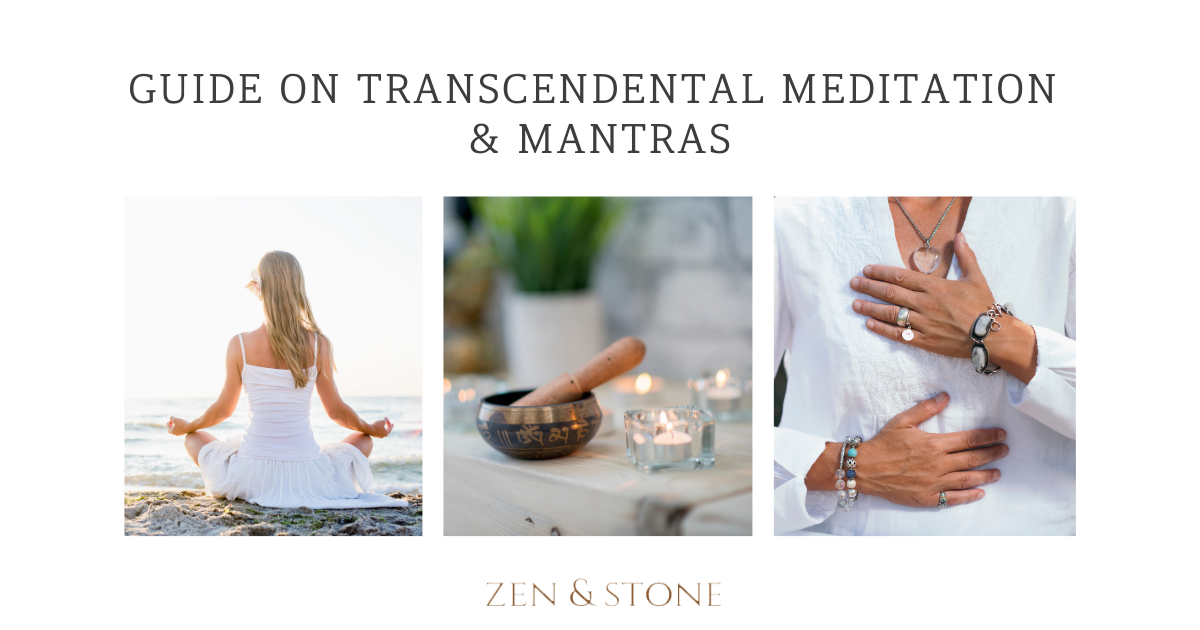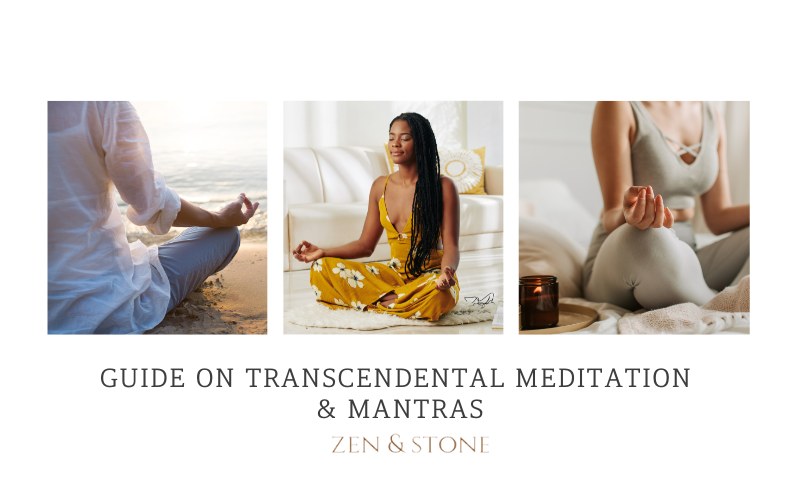
08 Sep Guide On Transcendental Meditation & Mantras
If you’re looking to get into transcendental meditation, you’re going to need some help in breaking it down. Let’s take a look at everything you need to know to help you get started!
What Is Transcendental Meditation
Transcendental meditation (TM) is a form of silent mantra meditation. Unlike the mantras that are commonly used in other types of meditation for healing and manifestation, the mantras used in transcendental meditation are all about sounds rather than meaningful words, and you repeat them in your head instead of out loud.
The point of these mantras is to focus your attention on something that is not meaningful, in order to stop conscious or active thought and enter a deeper state of meditation or a higher state of self-awareness – also known as pure consciousness.
History
The transcendental meditation practice was created by Maharishi Mahesh Yogi in India and was bought over to the United States in the 1950s during a series of world tours. Originally, you could only learn how to do it from a trained teacher.
It grew in popularity in the 1960s and 1970s due to its exclusivity and was even practiced by celebrities, most famously members of the Beatles and the Beach Boys.
The mantras necessary to perform the meditation were meant to be individual to each person, but in 2010, American filmmaker David Lynch challenged this by using a random word for his mantra instead of paying an instructor for one – and it worked just as well, if not better than the one assigned by an instructor.
Then, when a chart of TM mantras later went public, it was realized that the mantras were actually based on age and gender rather than anything personalized, but they’re no less effective. So, now, anyone can do it – the traditional way, or Lynch’s.
Benefits
The benefits of TM include improved self-awareness and coping skills, as it enables you to gain a deeper awareness of your inner self, which puts you in better alignment with what you really want in life and also makes you more confident in handling whatever life throws your way.
Studies show that transcendental meditation also improves cognitive function by thickening the brain centers responsible for high-level functions like awareness, learning, decision-making, and focus. These structures also dictate how you deal with pain, so it can actually improve your pain tolerance and help with chronic illness and injury, too.
In addition, it is said to help you access a higher state of spiritual consciousness necessary for spiritual growth and development, as well as connecting with your inner guiding voice and accessing your natural psychic abilities.
It’s even proven to help reduce anxiety and lower stress levels, promoting inner peace, which can also improve sleep quality, as well as reduce the risk of heart disease and high blood pressure. In fact, research also shows a 35% reduced risk of developing high levels of cholesterol and a notable decrease in cholesterol, as well as an increase in the production of a bodily compound that dilates your blood vessels, lowering your blood pressure.
With lowered cholesterol and blood pressure, TM also lowers your risk of heart attacks and stroke, and cardiologists have even acknowledged the benefits of transcendental meditation for the heart and circulation system.
How To Do Transcendental Meditation
Now that we know a little more about how it works, let’s take a look at how to do the transcendental meditation technique.
Find A Space
The first step to doing a TM is to find and prepare a good place for your meditation session. Ideally, this should be in a quiet room that you feel safe and comfortable in and where you won’t be disturbed by anybody else.
You may also want to cleanse the space first by smudging it with sage or another purifying herb, diffusing some purifying essential oils inside of it, or placing a cleansing crystal like Selenite in the center of the room.
Relax
Next, get into the position that you feel comfortable meditating in, both sitting and lying down are fine, and relax your body and mind by closing your eyes and focusing on your breathing; with slow and deep breaths.

Choose A Mantra
While you can still find a certified teacher to help you with your mantra, it’s not necessary. You can either choose your mantra from the official list, makeup one of your own that feels easy and enjoyable to repeat, or you can just let the sound come to you when you’re in the meditative state.
The official transcendental meditation mantras are as follows:
Age/Mantra:
- 0-11 – eng
- 12-13 – em
- 14-15 – enga
- 16-17 – ema
- 18-19 – ieng
- 20-21 – iem
- 22-23 – ienga
- 24-25 – iema
- 26-29 – shirim
- 30-34 – shiring
- 35-39 – kirim
- 40-44 – kiring
- 45-49 – hirim
- 50-54 – hiring
- 55-59 – sham
- 60+ – shama
The advanced mantras, in order of advancement, are as follows:
- Aing Namah
- Shri Aing Namah
- Shri Aing Namah Namah
- Shri Shri Aing Namah Namah
- Shri Shri Aing Aing Namah Namah
- Shri Shri Aing Aing Namah Namah
Repeat For 20 Minutes
Once you’ve got your mantra, repeat it in your mind without using your voice. The repetition should be natural and effortless, without conscious effort or thought. Try to go with your breath, without forcing the two to synchronize.
You should aim to repeat your mantra for 20 minutes, and once the 20 minutes are over, you should take an extra couple of minutes to experience your relaxed state. If you need help timing your 20 minutes, use a timer or set an alarm on your phone.
How Often Should You Practice Transcendental Meditation?
To notice the benefits of transcendental meditation, the average TM teacher would say that you should practice it every day for 20 minutes, while others suggest that twice a day is even better, ideally before your first and last meal of the day.
Where Can I Find A Transcendental Meditation Course?
There are a bunch of in-person and online courses that offer teachings on transcendental meditation techniques, so do your research and choose whatever feels right to you. They can be costly, so consider whether or not it’s the right path for you carefully.
The Bottom Line
It’s easier than it sounds to practice TM, and with its many health, emotional, and spiritual benefits, it’s a great type of meditation for personal and spiritual growth. If you’re interested in practicing transcendental meditation, try out the mantras and follow our step-by-step guide for the best results.
